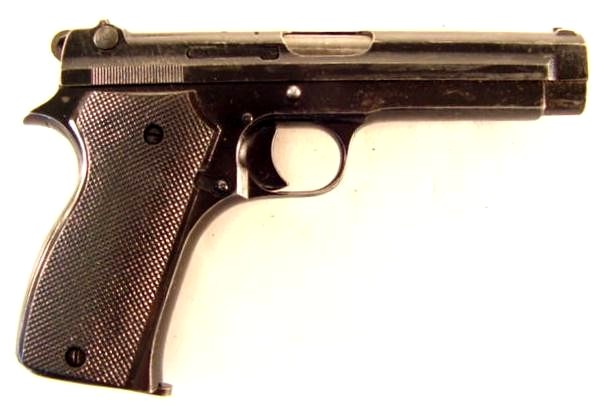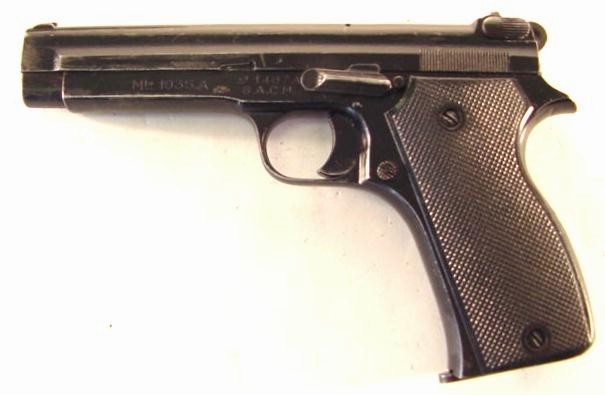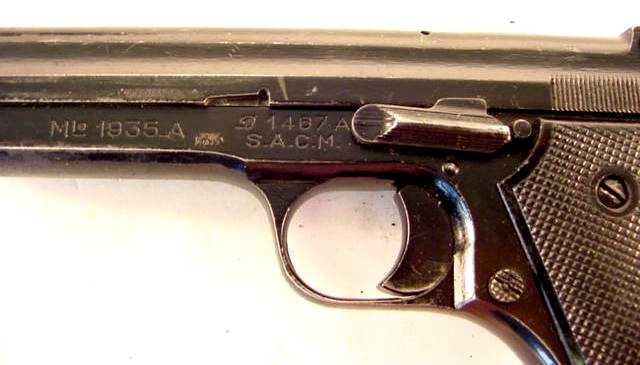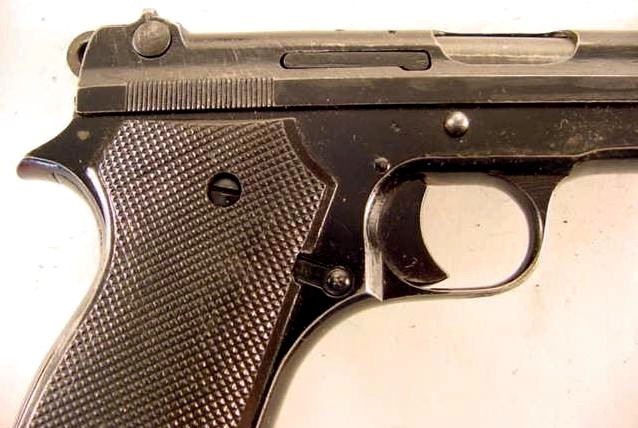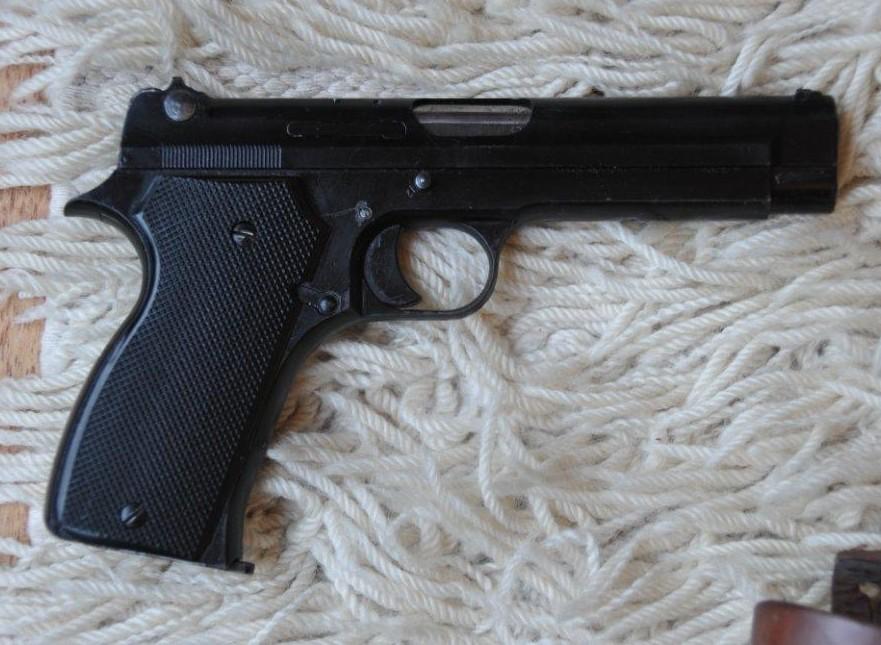
SACM 1935A
Pistol SACM Models 1935A, rare bus beginning of manufacture, i.e. of before the German invasion, small number (A397), belonging to the 9.000 specimens provided to the French Army before May 40 (first batch delivered to the Regional Park of the Material of Bourges at the end of 1937), with its leather case dated 1940, 2 chargers of reserve, a cleaning-rod (coppered) and the kit maintenance of time.
Stéphane

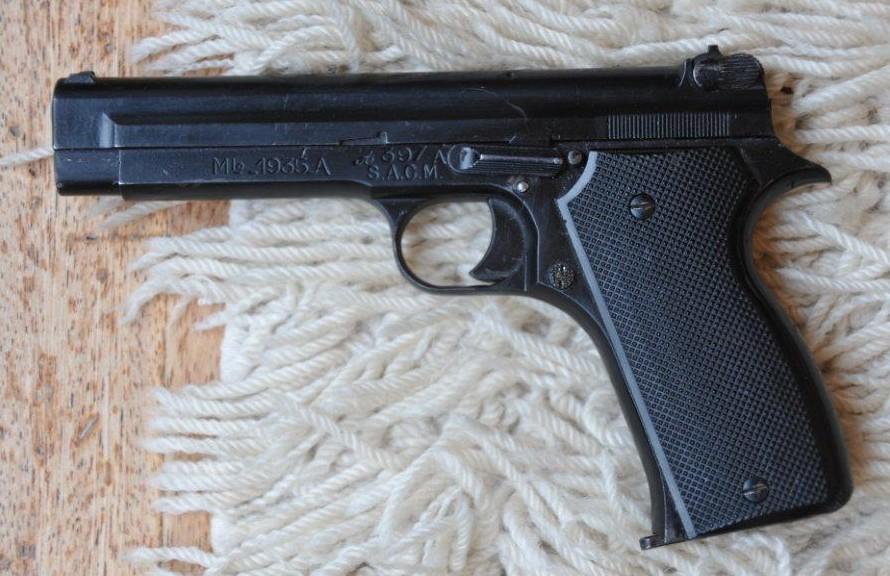
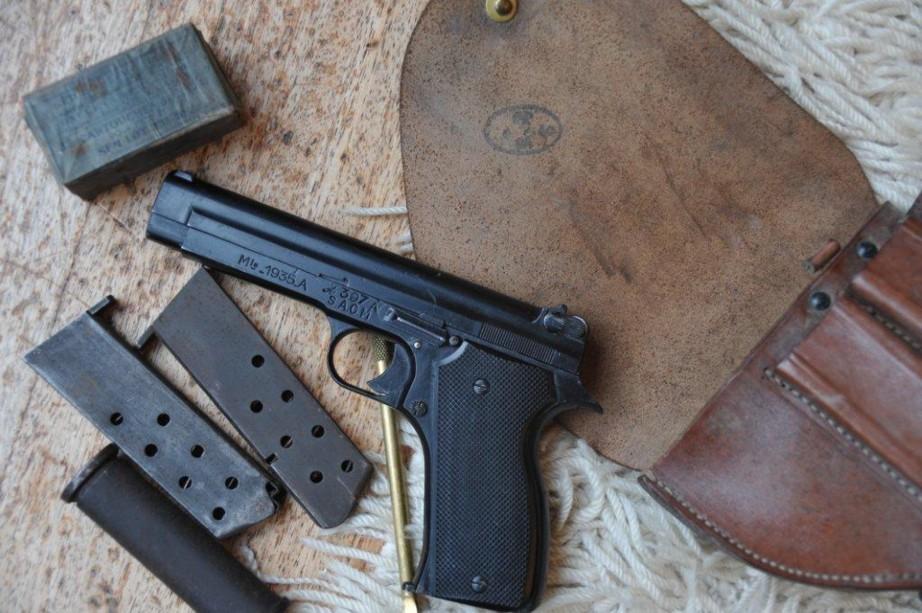
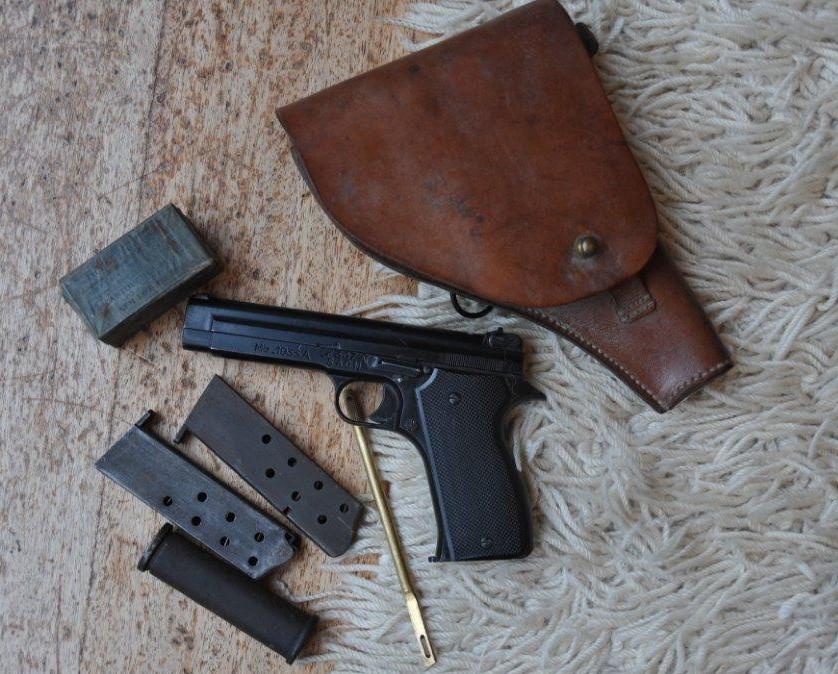
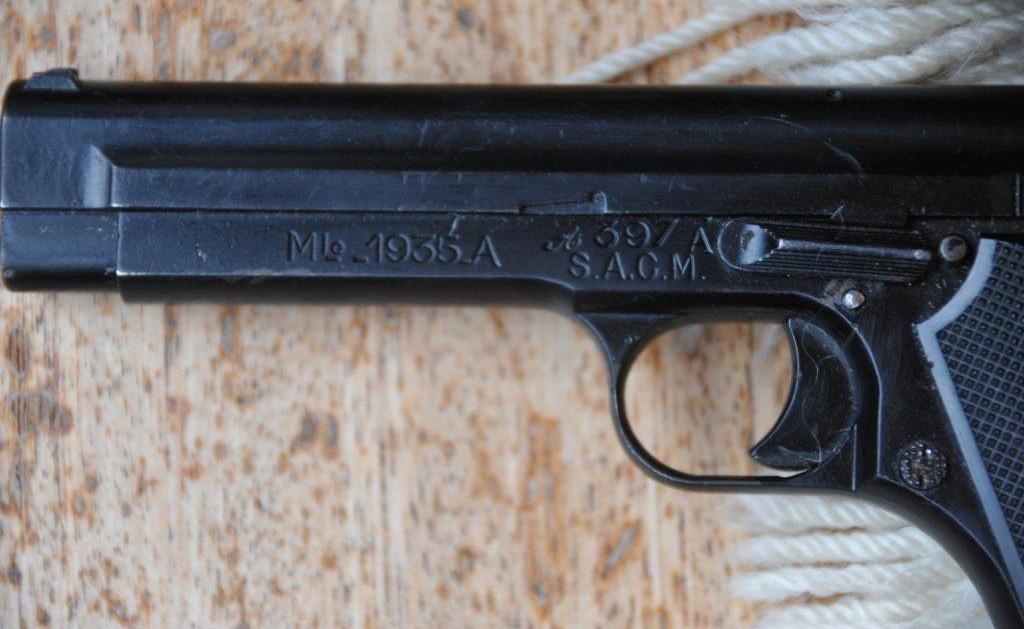
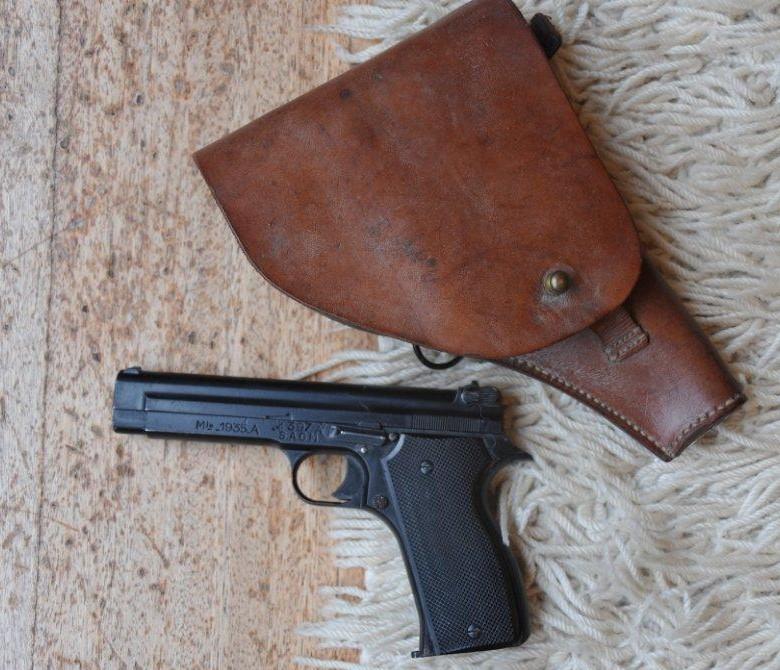
Pistol SACM mod. 1935 A.
In 1927, a memorandum of the Ministry for the War ordered to acquire a new 7,65mm pistol round, known as the "7,65 long" for additional comparative experiments with semi-automatic pistols which had begun in 1922.
In 1935, for a new round of competition, the SACM (Alsatian Company of Mechanical engineering) produced a pistol using the Petter patent. Charles Gabriel Petter, former officer of the Foreign Legion was a Swiss engineer. Following World War I, he resided in France. He submitted his patent application on March 9, 1934 and received Patent Number 782914 on March 25, 1934. This patent covered a number of improvements which impressed the Commission of Experimentation who adopted the SACM pistol under the designation Pistolet Automatique Modèle 1935 A (PA35A).
The first pistols, delivered at the end of 1937, had some problems. Production of the pistol actually started in the beginning of 1939. All the production of the PA35A will be concentrated in the SACM factory located in Cholet (49). Perhaps 10700 guns were produced before the armistice of June 1940. During the occupation, the Germans continued production through April 1944. These weapons were mainly delivered to the Militia and the Health services of Wehrmacht in Paris. After the war, SACM resumed manufacture for the French Army and delivered 50,400 more pistols. Production was finally discontinued in 1950 with a total of production of 84,950 pistols.
The cartridge employed in PA 35A is known in France as the 7,65 long, abroad it is commonly known as the 7,65 MAS. In fact, this ammunition originated in America. It appeared in 1918 as the .30 Pedersen. It was intended for a Springfield 1903 rifle action which was converted into machine pistol. The inventor of this conversion is John D. Pedersen. The round caught the interest of French engineers. The round was evaluated in a study undertaken by l'Etablissement d'Expérience Technique de Versailles from 1924 through 1926. Initially a batch of 50000 cartridges was ordered from Remington, USA. Then, SFM began manufacturing the cartridge in France, followed by Gévelot, the "Société Industrielle Méridionale" and the cartridge factories of Puteaux, Rennes, Tarbes, Bourges and Toulouse. During the occupation, the Germans continued a profitable production. Production of 7,65 long ended in 1950. However, in 1980 the SFM manufactured a final lot for export.
Schweitzerische Industrie Gesellschaft (SIG) of Switzerland bought the Petter patent in 1937. From this patent the SIG developed a series of prototypes in 9mm Parabellum in 1944. These firearms whose silhouette is similar to the PA35A, were designated the P44/8. Further refinements of these prototypes lead to the SIG P-210 which was by the Swiss army as their service pistol.
All my thanks to Mr Roger Desbois for the text and technical details.
